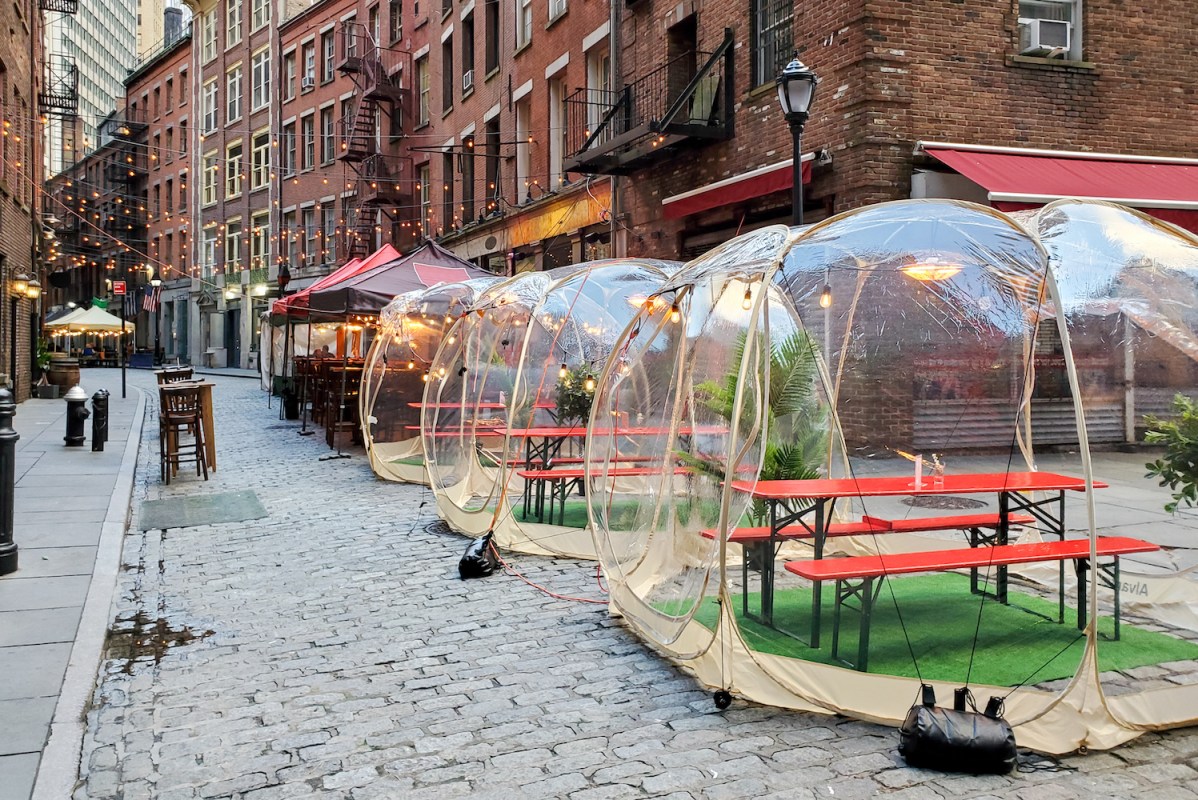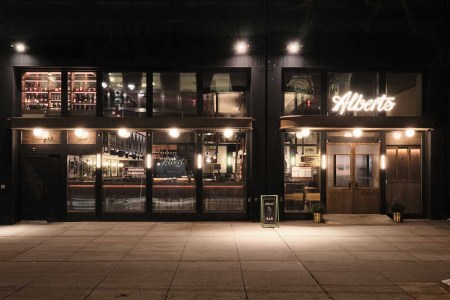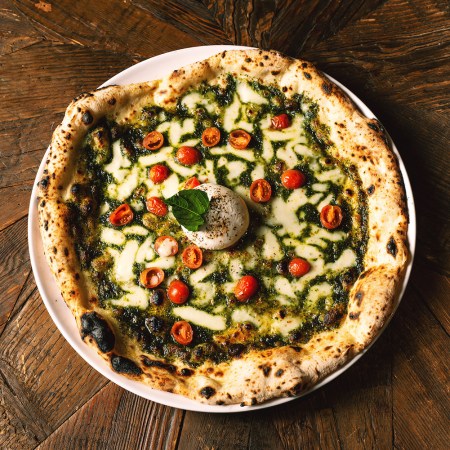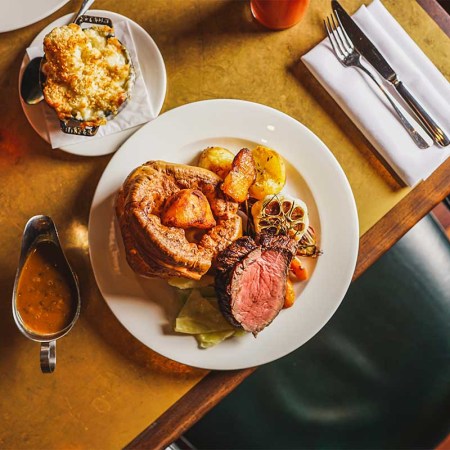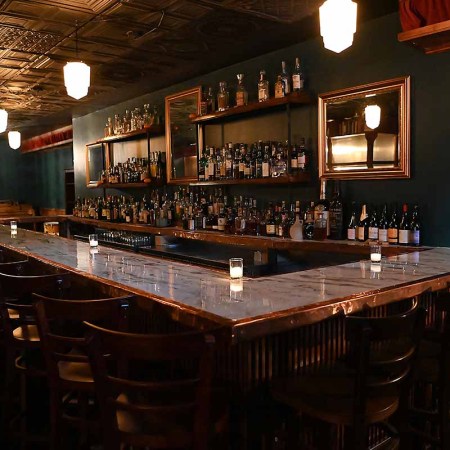The first spring in New York City without vaccine and/or mask mandates since 2019 — yes, it’s been that long — has sprung. With the warmer weather comes optimized opportunities for outdoor dining, of which us city dwellers have been blessed with in abundance since a few months after COVID-19 upended life as we know it. Local legislators generously granted sidewalk and street dining permits seemingly to any bar and restaurant in the five boroughs that wanted one. Not only did it help thousands of businesses survive the pandemic, it also gave diners and drinkers a chance to better cope with COVID-19 restrictions.
But with the crisis moving further into the rearview — though, as of April 27, the city still averages one death from the virus every day — the status of outdoor dining is now in flux. So we asked Andrew Rigie, executive director of the New York City Hospitality Alliance, an organization he says “gives the city’s restaurant and nightlife industry it’s own independent organization to serve it and advocate on its behalf,” about the future of local outdoor dining and how recovery is going in the nightlife and hotel industries.
This interview has been edited for context.
InsideHook: Has any organization been able to quantify in some way how devastating the pandemic was to the restaurant and bar industry in New York City?
Andrew Rigie: That’s been a challenge, but we know the city’s restaurants and bars still employ about 13,000 fewer people than they did pre-pandemic. But I think we would have lost thousands of more if it wasn’t for a lot of the policies we were successful in advocating for. Thankfully, a lot of people are very entrepreneurial in this industry and what was, unfortunately, one person’s loss became another’s opportunity. Many landlords — particularly early on in the pandemic, like everyone else — were panicking. So there were some good opportunities to be had, and people snatched up leases on fully built-out restaurants and bar spaces where they just had to make cosmetic changes and didn’t have the same heavy capital investment that it would take to buy an existing restaurant out or go in and do a gut renovation.
How Albert’s Bar Is Making Midtown a Destination
You finally have a place to get a great cocktail around Grand CentralSo it was difficult — obviously, and to put it mildly — but there’s been a lot of inspiring perseverance and inventiveness.
The tragedies that so many people went through are going to scar them for life. Unfortunately, a lot of people lost so much. But at the end of the day, New York is a very food- and beverage-centric city. In restaurants and bars, that’s where life happens. As I’ve been saying throughout the pandemic, in order for New York City to recover, restaurants, bars and nightlife have to be at the core of our recovery because that’s how so many people socialize — that’s how business happens, that’s our streetscape. You see it even in all the new developments: food and beverage tenants are the anchors to these larger, mixed-use developments. Food and beverage establishments are part of the social and economic fabric of the city.
The resilience in the industry was incredible. Even when the restaurants were going through the worst crisis they’d ever experienced, they were so focused on serving others who were going through crisis, too. The amount of meals that were delivered and everything they did to serve their communities while they were still losing everything was pretty remarkable, and those fortunate enough to make it through have amazing stories to tell.
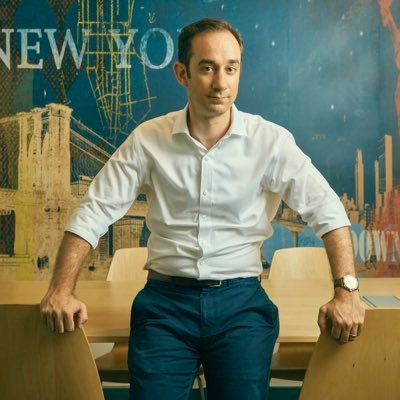
What’s happening with outdoor dining, one of the best things to come out of the pandemic, in New York City?
When the Open Restaurants program first launched in June of 2020, it was not only critically important to restaurants and jobs, but it was also symbolic. I think it exhibited that resiliency I mentioned, the no-quit personality that will persevere through whatever COVID does to us as an industry as a whole.
Looking ahead, outdoor dining will be a permanent fixture in the city. We wish the permanent guidelines had been enacted a long time ago because as we continue to operate under the temporary program, it causes frustration for restaurateurs and residents. We believe under a good, final, permanent program, a lot of the concerns that all different stakeholders have can be addressed and we can have the best outdoor dining program possible. Now, we’re just waiting for the mayor and city council to agree on legislation and move toward passing that and transitioning from the temporary, pandemic-era Open Restaurants program to a permanent, outdoor dining program that cuts the red tape and bureaucracy and is not cost-prohibitive like sidewalk cafes were, pre-pandemic, for so many small businesses. Many more restaurants throughout the five boroughs will be eligible to have outdoor dining on the sidewalk, but also for the first time under a permanent program, in the roadway, with streeteries.
Do you feel as though businesses should be held a little more accountable for upkeep of their outdoor dining facilities? There’s been a lot of conversation about how many of them have become eyesores, havens for rats and even storage facilities that don’t actually host diners.
Sidewalk cafes will go back to what they looked like pre-pandemic, where you have tables, chairs, an awning or umbrellas, some planters and maybe barriers — very non-controversial. The difference will be on the back end. The permanent licensing to get one will be streamlined — is our hope — and the cost to participate will be significantly reduced so smaller restaurants will be able to participate and we’ll be able to have them in more locations than the pre-COVID regulations allowed.
The streeteries were novel. Any discussion about them needs to happen in a full context. This program was established in an unprecedented crisis to save thousands of small businesses and hundreds of thousands of jobs, and it did that. In a crisis when the restaurants had nothing, they put these things up. They had little guidelines, which were changing. Everything was unclear, so these things got put together under those conditions. Even the ugliest ones I find beauty in their resiliency. They’re symbols that we would do whatever we could to survive and people would come out and eat in them.
Now, almost three years later, of course some of the streeteries are unsightly and falling apart. We’ve been saying for a long time that those should be removed or modified to look better and operate better within the streetscape. But people built these things to survive using, like, plywood. They weren’t using weather-resistant materials; they didn’t think it was going to go through multiple winters, summers, these ever-changing mandates. So I don’t think what’s out there now should be representative of what a permanent outdoor dining program should look like.
Under a permanent program, we need more guidelines that set expectations that are standardized and sustainable. I don’t think we’re going to see under a permanent program what I call “indoor dining outdoors.” We’re going to be talking more about outdoor dining without fully or semi-enclosed structures, and the design standards for streeteries under a permanent program will address a lot of the aesthetics. Building codes can address a lot of the issues about whether or not the platforms have areas for rodents to harbor and make sure these setups are modular so they can more easily be moved for cleaning or if there needs to be road work. And there will be more cables, platforms, chairs, barriers and plants in and around these areas than what you see now.
Will outdoor dining be seasonal? Is that something you support?
There seems to be general agreement that sidewalk cafes will be year-round. The question is on roadway dining, whether or not it will be seasonal or year-round. We have advocated for roadway dining to have a year-round option, that if your business meets certain specifications you can have it set up throughout the year. We would like to see — which we’re confident there will be — roadway dining. The mayor’s office and the city council need to determine whether or not there will be a year-round option, and they have to realize that if it’s going to be seasonal, that is going to create more operational challenges and expenses, particularly for smaller restaurants. If a restaurant needs to set up their outdoor dining and break it down during the colder months, find a place to store it, pay for it to be in storage, then pay to have it reinstalled or even build new ones each year, that’s going to be tough for places.
We also have to see what kind of market there will be for the program. After they pass the legislation, the laws will go to rule-making, and then it looks like the Department of Transportation will have to propose what the roadway structures will look like. We’ve asked for multiple options that restaurants can choose from, so they know that their outdoor dining facility would meet all the specifications and would be in compliance, but they would be able to customize it and have their own authentic look. That will keep them all from appearing standardized. It also creates business opportunities for others to build streeteries and help with the setup, the storage and potential reassembling of the structures.
We just need a good framework that allows us to have the best program possible.
What would you say to those who are critical of streeteries, claiming they take up too many parking spaces?
Roadway dining took up less than half of 1% of the approximately three million parking spaces in New York City and helped thousands of restaurants and their employees. It also allowed thousands and thousands of people to dine outdoors. We didn’t always have parking spaces. Before there were parking spaces there were no parking spaces. The economic activity generated by outdoor dining is a net positive for the city. Many of these lost parking spaces aren’t even metered, so you’re supporting small businesses, creating jobs, tax revenue and you’re giving some space back to the people.
I get it — in some neighborhoods, there may be a higher concentration of parking spots that have been lost, and cars are needed more than others in certain areas. I suspect that in many of those areas, fewer restaurants will participate in roadway dining. I think fewer restaurants in general are going to participate in a roadway dining permanent program when they have to go through an application process with the community board and start paying for it.
Switching gears to the hotel industry, how hard was that industry hit and where is it on its road to recovery?
Hotels have a long road to recovery. Like bars and restaurants, they’re in a lot better place than they were, but there are still challenges. A lot of hotels are not full and the rooms are being used for other purposes than a traditional visitor to New York City. Many are being used as shelters for migrants.
Thankfully, domestic and international tourism is coming back. It’s not back to pre-pandemic levels yet, though. Business travel, conventions, even people from the Tri-State Area — people coming in to see a Broadway show and going to a restaurant — these are all things that are trending in a much better direction, but they’re not back to where they were before COVID.
Is there something you think the city can do to help?
It needs to continue to support the industry and focus on bringing back tourism but also conventions. One of the challenges, historically, in New York City is that it’s expensive to host a convention here, so we need to make it more affordable and incentivize folks to come host their conference here. Because we know when people come, they’re staying in a hotel, they’re going out to eat, they’re going out sightseeing and doing a lot more than just attending their conference or convention. Their visit is work but also a vacation.
The city needs to keep itself clean and safe and needs to focus not only on travelers, but people who live in the city, too. We need to keep it affordable so they can go out and spend money.
There are stories about how remote work is cutting down business travel. Is that a long-term concern for you? Are there any solutions that will help the hotels survive?
It’s going to be tough. People agree, we’re not going back to the office five days a week. Hybrid work is here to stay in some capacity. I think over time, more people will come back to the office, but we’re not going to get back to where we were. So we need to look at — which people are already doing — these buildings and think about how to create more housing, which poses a lot of challenges in modifying these office buildings into apartments. But also: how great would it be to have multi-floor nightclubs in Midtown Manhattan? It wouldn’t bother the residents. Maybe creating some big exciting theme park inside a building. Indoor row rooms. Urban farming.
I think there’s tons and tons of ways to reimagine the city, and the city can’t and will not be the innovator of the future. But what it can do is set policies that help attract entrepreneurs and creative people and provide the framework in which they can do what they do: create.
Join America's Fastest Growing Spirits Newsletter THE SPILL. Unlock all the reviews, recipes and revelry — and get 15% off award-winning La Tierra de Acre Mezcal.
